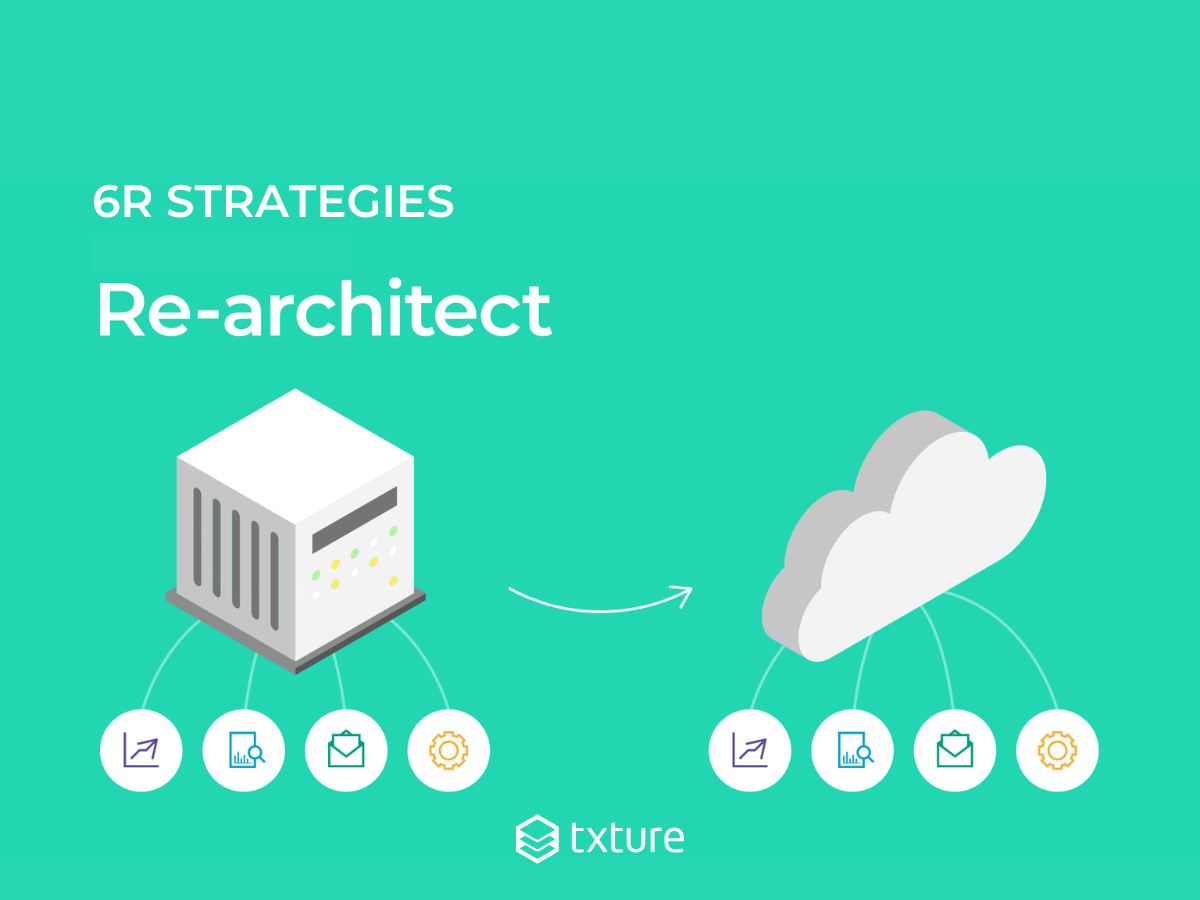What is rearchitecting? Cloud migration strategies

When moving an application to the cloud, you have several options to choose from: should you simply “copy and paste” the existing application to the cloud, with little or no change? Should you replace it with a similar SaaS solution? Or should you entirely rewrite the application to make it more “cloud native”?
A fairly popular model for cloud migration strategy is called the 6Rs: it consists of 6 different migration approaches, and helps you define, for each application of your IT portfolio, the most relevant migration strategy. In this article, we’ll focus on the strategy called rearchitecting. We’ll discuss the pros and cons of this approach, and the use cases for which it makes sense to rearchitect an application.
What is rearchitecting?
Rearchitecting (or refactoring) is the most advanced strategy when moving to the cloud. It consists of a rewriting of your existing application in a more cloud-native fashion. This often involves breaking down a legacy, monolithic application into a series of smaller and independent components, and transitioning to a microservice architecture. It can also involve migrating the application to a serverless architecture.
Rearchitecting takes a bigger effort than just copypasting an as-is version of your application to the cloud. Still, it is a relevant approach if you want to unlock the benefits of a cloud-native infrastructure.
Advantages of the rearchitecting strategy
Usually, rearchitecting is the most demanding strategy in terms of time and costs. But looking on the bright side, it is also the best strategy when it comes to fully leveraging the advantages of cloud computing. This typically includes:
- Increased performance
- More responsiveness
- Improved availability
- More agility and more scalability
Rearchitecting your application also facilitates the addition of new features when needed. It paves the way for later improvements and makes your application future-proof.
What are the different 6Rs? In this short video, our colleague Lena gives you an overview of the 6Rs of cloud migration:
Drawbacks of rearchitecting
First, rearchitecting is a very good approach if you have time to entirely rewrite your application’s architecture, including its code base. But if you are under time pressure (for instance you are forced out of your data center), and speed is the most important factor for you, you might consider a lift and shift strategy instead.
Also, when rewriting an application, you should make sure that this application stays portable, in case you need to change your cloud provider in the future. Otherwise, you might end up in a vendor lock-in situation.
Finally, keep in mind that rearchitecting is often an expensive migration strategy. It is not necessarily a disadvantage, as in the long term, the benefits will likely outweigh the initial costs, but it means you should not choose this strategy for applications of little interest.
It could be your best choice if:
- The application is critical for your organization. The right migration strategy largely depends on the time and effort you are willing to invest in a specific application. Rearchitecting an application typically takes extra time and effort. But it also brings significant benefits, as we saw previously. You should then keep the rearchitecting approach for strategic applications that need to be enhanced.
- Also, for some very outdated applications, you may have no choice but to rearchitect, since the existing application and its software structure can no longer be operated with modern technologies used by the cloud providers.
- You expect a burst of traffic. If you need to enhance your application so it can handle peaks of traffic, rearchitecting is probably the best approach to improve the application’s scalability and availability. Indeed, as you will redesign your application in a cloud-native fashion, you will enjoy the scalability associated with cloud infrastructures.
Seeing is believing!
Discover how Txture helps you define the right migration strategy and speeds up your cloud migration
Reach out to our colleagues from Partner Management and have them show you Txture.
Related posts
29.4.2025Application ModernizationDefine your scope for IT modernization2.3.2025
Cloud StrategySelecting the right cloud data center for hosting your workloads27.6.2024
Cloud optimizationA great driver to maximize cloud value: moving to instances with modern processors 24.5.2024
Cloud Knowledge5 best practices to manage change during a cloud transformation5.4.2024
Generative AIHow to welcome Generative AI into your existing tech ecosystem
